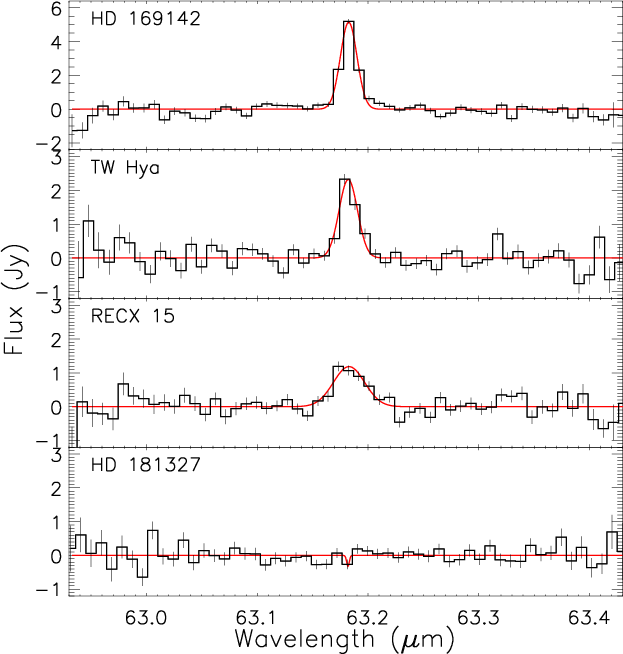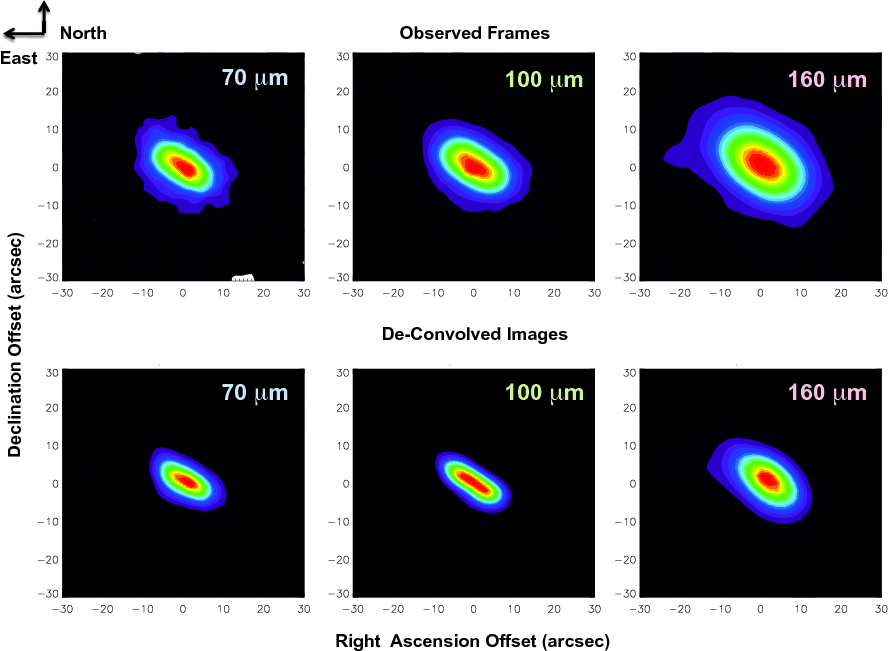Herschel Space Observatory investigates gas and dust
in forming and mature planetary systems
The Herschel Space Observatory, with its 3.5 meter-sized mirror, represents the largest space-based telescope in the history. It was launched into space in May 2009 and is now conducting observations in the far-infrared, probing the coldest dusty and gaseous regions in the Universe. Herschel observations cover a diversity of objects, ranging from planets in the Solar System to distant galaxies. The Astrophysical Institute and the University Observatory Jena participates in two Open-Time Key Programs of the Herschel mission: GASPS ("GAS in Planetary Systems", Jena Co-I: Alexander Krivov) and DUNES ("DUst around NEarby Stars", Jena Co-Is: Alexander Krivov, Torsten Loehne, and Harald Mutschke).


The first project, GASPS, aims at detecting and measuring the gas component in protoplanetary, transitional, and debris disks around stars, which represent successive evolutionary stages of circumstellar disks. Dense, gas- and dust-rich protoplanetary disks are envoronments is which planets are formed around the stars. Debris disks are much more tenous relics of planet formation; many of them encompass orbits of planets that have formed earlier. The figure on the left shows the oxygen spectral line at 63 microns in disks of four stars with the ages approximately in the range from 6 to 12 Myr, which is about the time around which most protoplanetary disks are believed to lose their primordial gas. These four sources have brought three unambiguous detections aroung younger objects and one non-detection around the oldest object (HD 181327).
The second project, DUNES, provides an unbiased search for dusty debris disks around more than a hundred nearby, solar-type stars. The observed dust in these disks is thought to be sustained by collisions amongst numerious invisible small bodies that are left-overs of planetary formation processes. These bodies are located on the outskirts of the systems and represent analogs of our Solar System's Kuiper Belt. The right figure presents a massive, large Kuiper Belt analog of a nearby star q1 Eridani. It has a radius of about 80 astronomical units and is about 1000 times more massive than the Kuiper Belt of the Solar System. The system is known to contain one close-in planet orbiting well inside the debris ring; more distant planets are expected.
The first scientific results of the Herschel mission have been recently published in a special issue of the international journal "Astronomy and Astrophysics". Six papers in that volume are based on the GASPS and DUNES results and are co-authoured by Jena astronomers.
Contact:
Dr. Torsten Loehne
(Tel.: 03641 / 947531, E-Mail: tloehne[at]astro.uni-jena.de)
Prof. Alexander Krivov
(Tel.: 03641 / 947530, E-Mail: krivov[at]astro.uni-jena.de)
